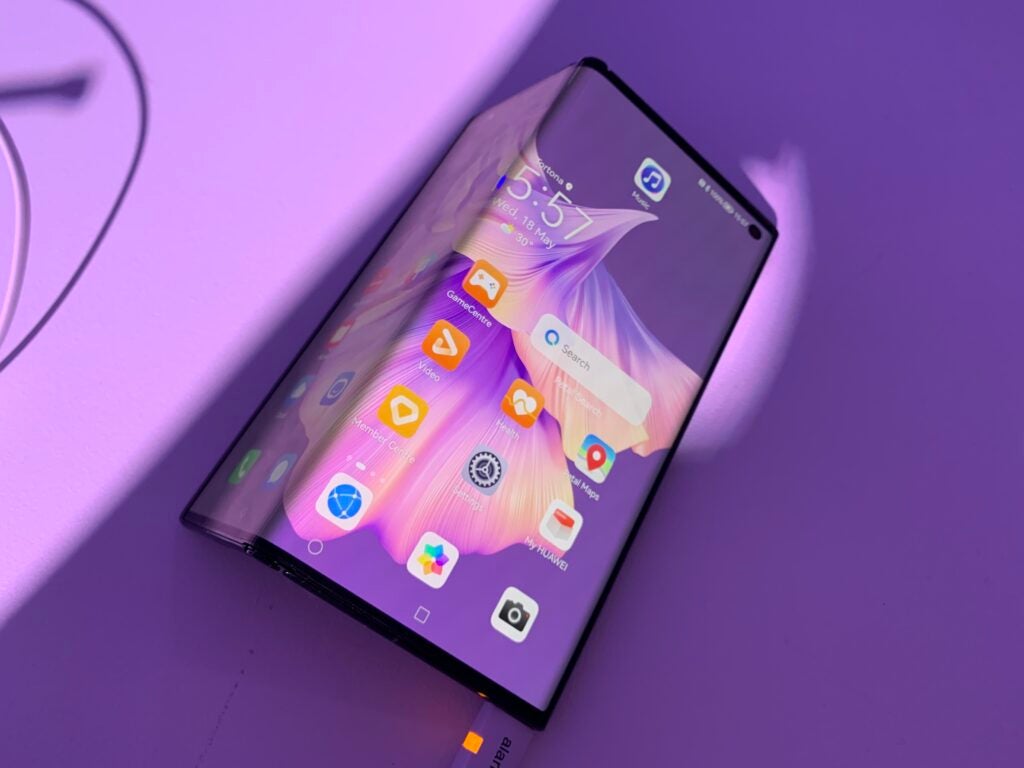The Mate Xs 2 looks almost identical to the original Mate Xs at a glance. However, the foldable has seen a range of improvements over the last few years, with key updates being the hinge, durability, camera quality and speedier fast charging.
-
Outward folding display6.5-inches folded and 7.8-inches unfolded -
Triple rear cameraCan also be used as the front camera -
4600 mAh batteryWith support for 66W Huawei SuperCharge -
8GB/512GBStorage is expandable up to 256GB
Introduction
Huawei recently launched its latest range of devices, including the Watch GT 3 Pro and an update to the brand’s flagship foldable, the Mate Xs.
The Mate Xs 2 features several upgrades compared with its 2020 predecessor, including Huawei’s new generation double-rotating Falcon Wing hinge, a 50-megapixel True-Chroma camera and a significantly more durable design.
The arrival of the Mate Xs 2 wasn’t a huge surprise as the device had already launched in China earlier this year, but it does mean that Huawei fans across Europe will have the opportunity to pick the foldable up themselves starting this June (if they’re willing for spend €1999 for the privilege, that is).
I had the opportunity to test out the Mate Xs 2 at the brand’s launch event in Milan. Scroll down for everything you need to know about the Mate Xs 2, along with my initial thoughts on Huawei’s premium foldable.
Design and display
- Outward folding display with a newly designed hinge
- More durable build than its predecessor
- No IP rating for waterproofing
Huawei has maintained the same outward folding design found on the original Mate Xs for the Mate Xs 2. However, the brand has introduced a new double-rotating Falcon Wing hinge to ensure the phone folds out completely flat and offer “perfect alignment between the display and hinge”.
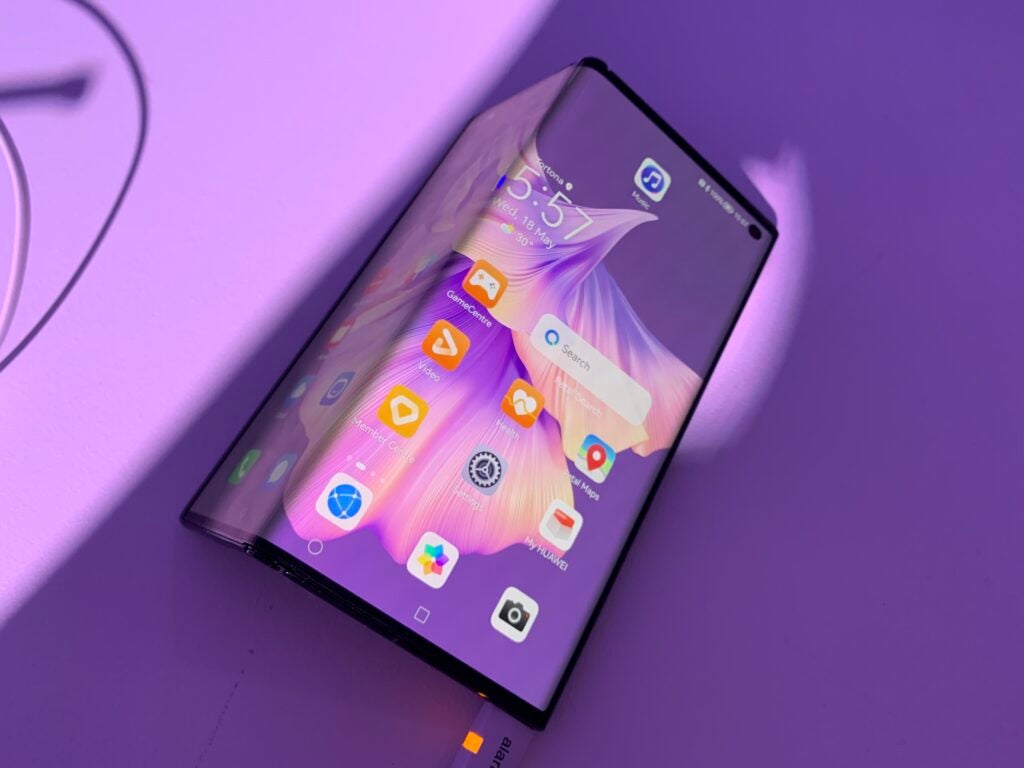
Unlike rivals like the Samsung Galaxy Z Fold 3, which folds inward, the Mate Xs 2 folds outward. This means you interact with the same display both folded and unfolded – just on a smaller scale.
Unfolded, I found the display to be seamless, making the phone feel much like a regular tablet. However, it’s difficult to determine whether the screen will remain this way after a longer period of use in a hands-on review, as foldables can sometimes form creases over time.
The 7.8-inch screen is a good size and navigating the phone unfolded feels spacious and makes room for features like split screen apps and floating windows. The 8:7.1 aspect ratio feels a little strange when streaming video as it leaves large black bars on the top and bottom of the screen, but the video player itself is no smaller than a regular phone and the shape is useful if you want to do something else as you watch, like scroll through the comments under a YouTube video.
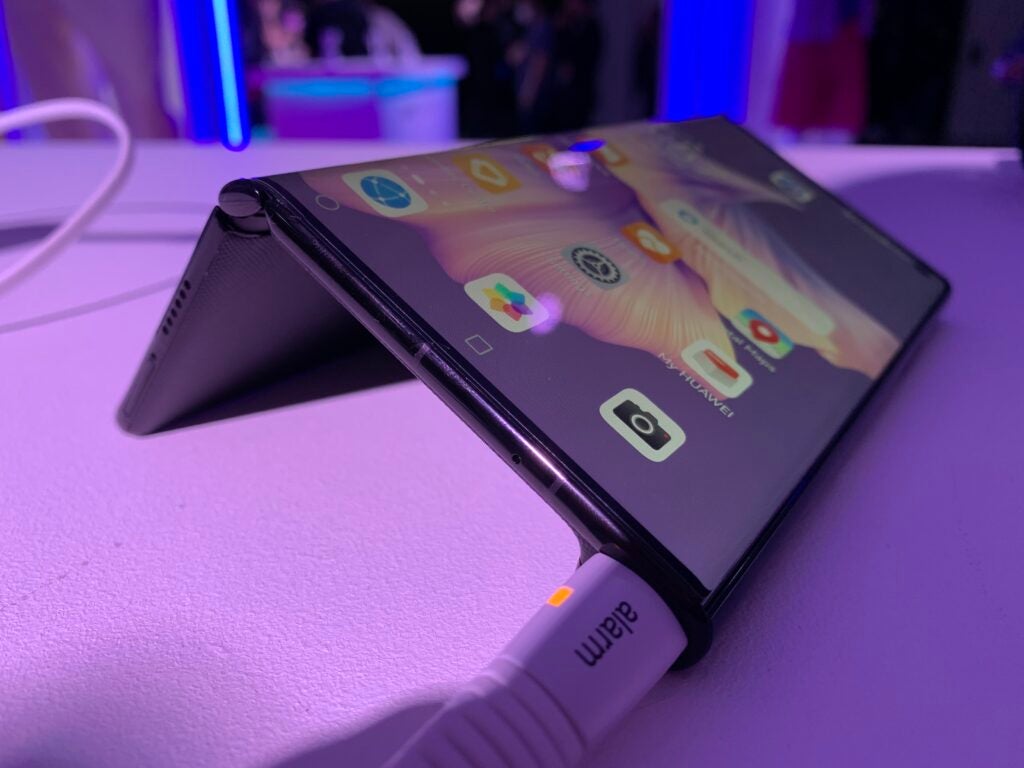
My biggest concern with the design is durability, as having the hinge fold outwards means the phone will inevitably land face-down if dropped when folded. Thankfully, Huawei has upped the durability with the Xs 2, giving it 2.5x the drop resistance, 2.8x the impact resistance and 1.4x the crush resistance of its predecessor.
This is again something we’d need to test in a full review to examine how the foldable stands up to daily use. The phone also has no IP rating, meaning it likely won’t fare well if you drop it in the pool.
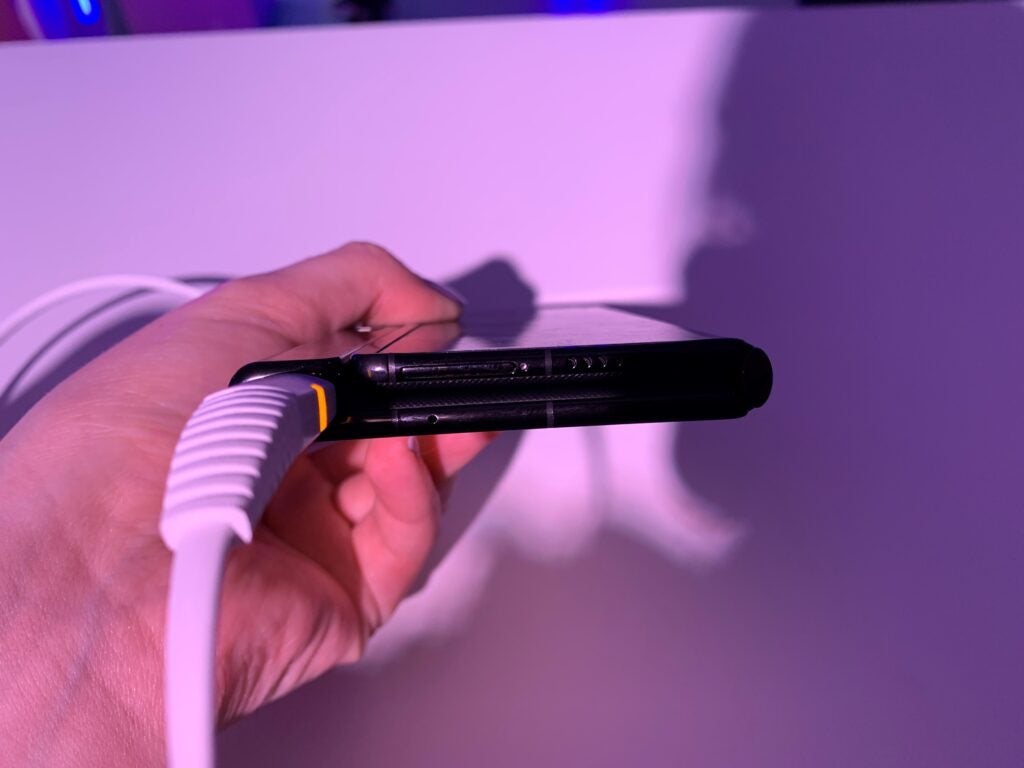
The phone is 11.1mm thick folded, or 5.4mm unfolded with the exception being the chunky camera module laying vertically down one side of the device.
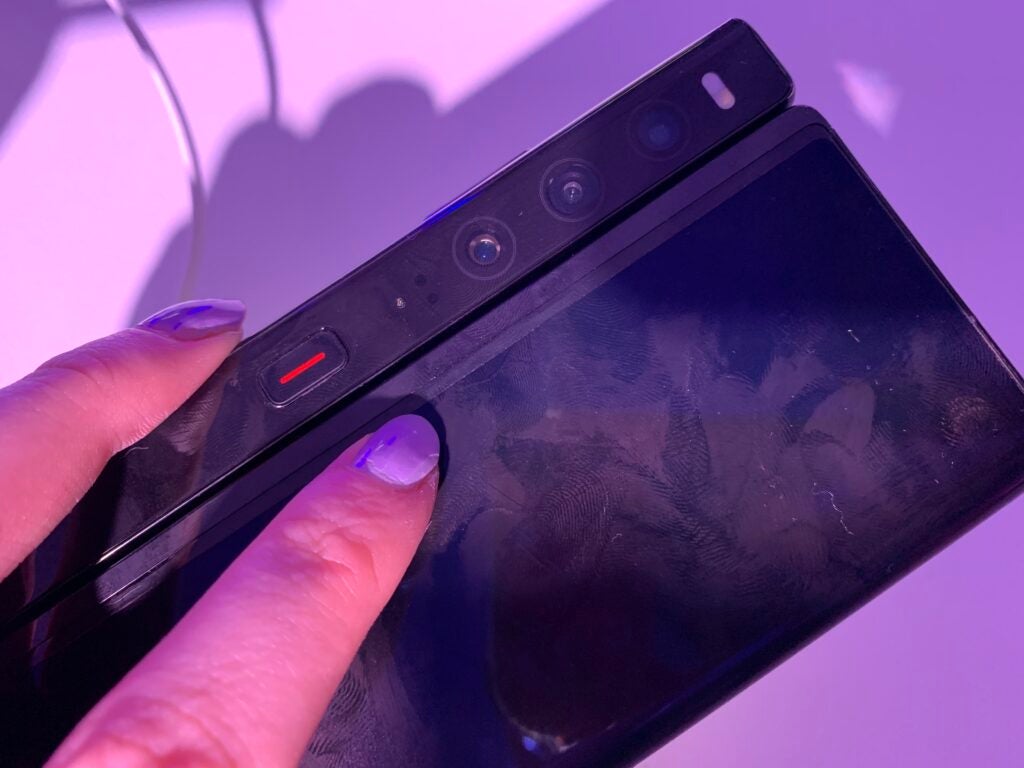
Folded, the phone is very fingerprint prone due to it being the second half of the display, but unfolded you can see the Black, White or Violet finish (depending on the design you choose). The Black model I held had a sophisticated cross hatch-textured material on the rear that offered better grip than the display and didn’t pick up smudges easily.
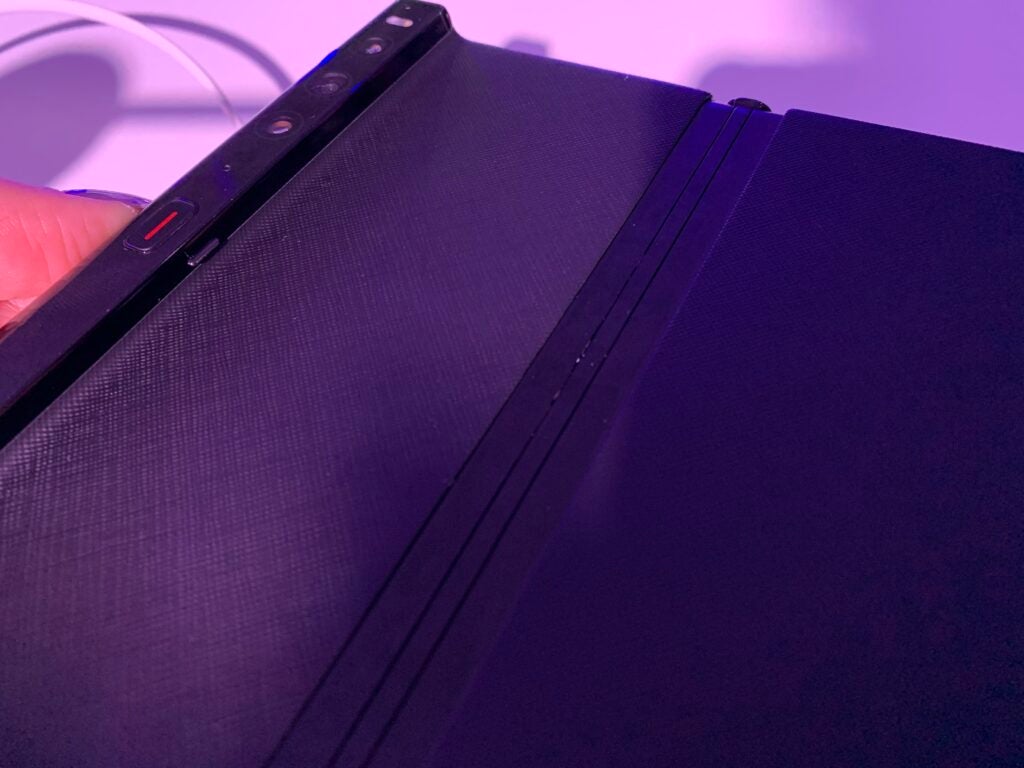
Camera
- The Mate Xs 2 has a 50-megapixel triple camera
- The rear camera doubles as a front camera
- There’s also a separate punch-hole front camera
Huawei has equipped the Mate Xs 2 with a triple rear camera that doubles as a selfie camera – along with a second, lower quality front camera.
The rear camera module includes a 50-megapixel True-Chroma sensor designed to capture true-to-life colours and better clarity with Huawei XD Optics. There’s also a 13-megapixel ultra-wide angle sensor and an 8-megapixel telephoto sensor.
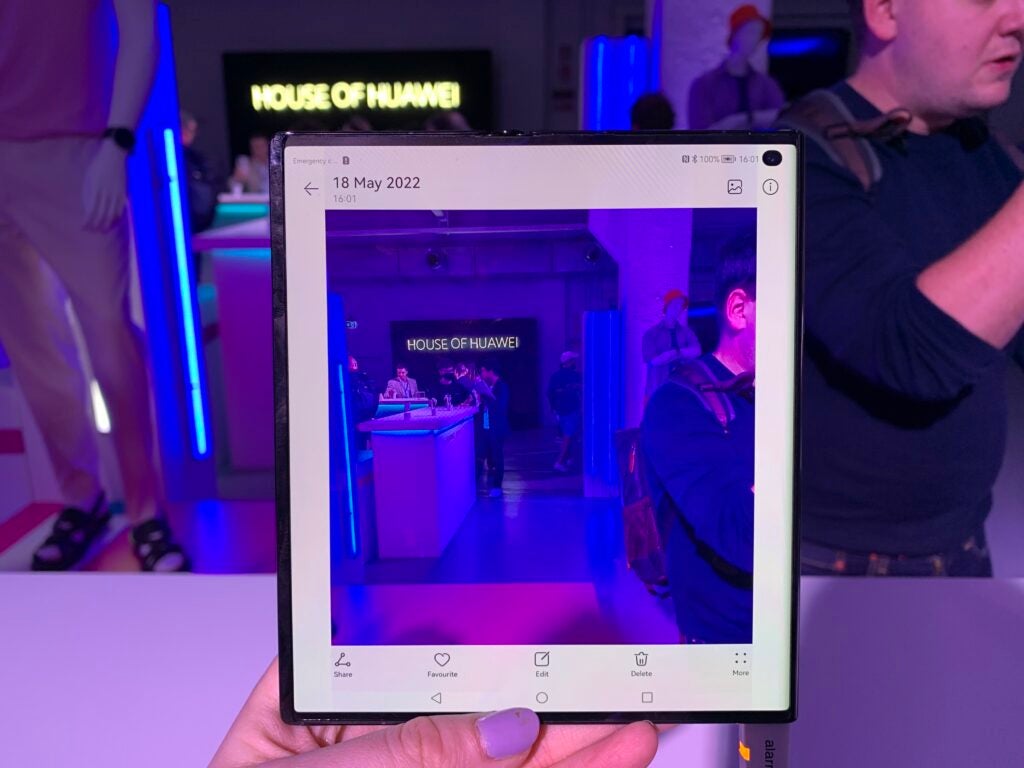
I only had a short amount of time to play around with the camera and the dim lighting and neon signs at the event automatically put the foldable into Night Mode, meaning I didn’t get the opportunity to see the camera in action in natural light. The images I did capture in this mode were impressively sharp and clear considering the challenging conditions. The colours were vibrant and appeared accurate, as well.
One of my favourite features here was Mirror Shooting, which gives you the ability to leverage the folded screen to show a preview of what your image will look like on both sides of the camera as you shoot. This means you can see what you look like and pose accordingly and take 50-megapixel selfies with ease.
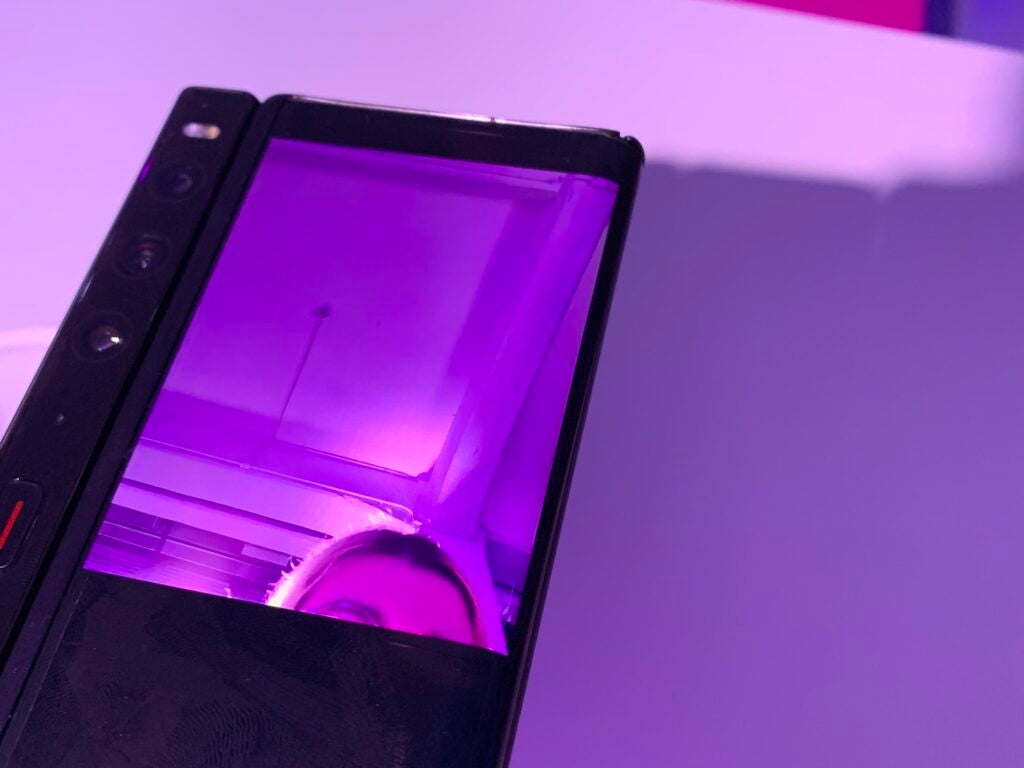
The phone also comes with a separate punch-hole front camera in the upper corner of the display – something that wasn’t available on the original Xs. The 10.7-megapixel wide-angle camera’s positioning makes it best suited to joining video calls, but I would definitely opt to take selfies with the rear camera if given the choice, both because of its higher image quality and because Mirror Shooting makes it easy.
Performance and battery life
- The phone is powered by the Snapdragon 888 4G chip
- Google services are limited with EMUI 12
- The 4600 mAh battery has 66W fast charging support
The Mate Xs 2 is powered by Qualcomm’s Snapdragon 888 4G chipset and the Adreno 660 GPU. This means that, unlike its predecessor, you won’t be able to take advantage of faster 5G connectivity with the Xs 2.
Software-wise, the phone runs Huawei’s EMUI 12 operating system instead of HarmonyOS or Android. The operating system looks great and is easy to navigate, but the phone does still face issues when it comes to installing Google applications, so this is something to be aware of if you use a lot of Google services in your daily life.
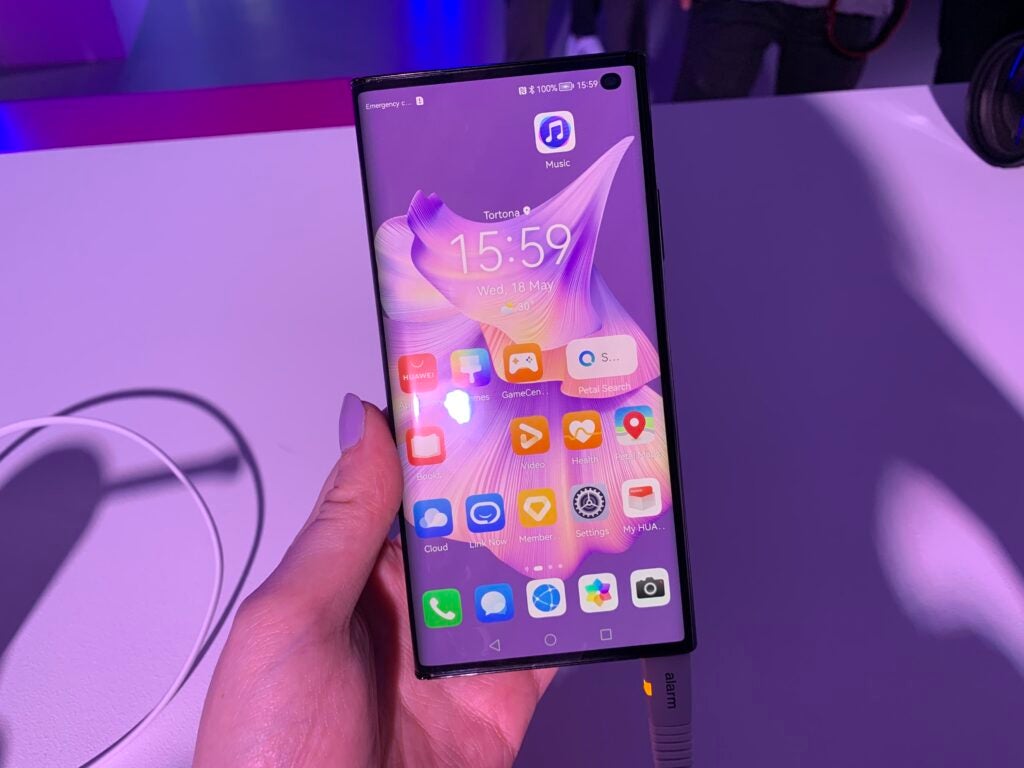
There are some great productivity features to note here, including floating windows, a split-screen view and swipe gestures. The interface feels speedy enough as well, though it’s difficult to measure performance having only spent a short amount of time with the device.
Likewise, it’s tough to determine exactly how long the battery will last in a hands-on review, but Huawei claims the Xs’s standby battery life has improved with this generation.
The Xs 2 packs a 4600 mAh battery, along with support for 66W Huawei SuperCharge fast charging. There’s still no wireless charging support, however.
First Impressions
The Mate Xs 2 looks almost identical to the original Mate Xs at a glance. However, the foldable has seen a range of improvements over the last few years, with key updates being the hinge, durability, camera quality and speedier fast charging.
On the cons side, 5G support has been dropped and the phone still doesn’t include an IP rating or support for wireless charging. It’s also very expensive when compared with rival phones, like Samsung’s latest Z series models.
You’ll have to wait for our full, in-depth review to hear our final verdict on the camera, performance and battery life, but I enjoyed using the Mate Xs 2 during my brief time with the phone and it comes across as an evolution over the original Mate Xs.
Jargon buster
5G
Offering faster download and upload speeds when compared to 4G. Great for game streaming and HDR video playback. Not supported everywhere yet and speeds vary wildly.
USB-C
The modern USB connector you’ll find on most Android phones, new laptops, cameras and games consoles. It’s reversible and used for charging along with data-transfer.

